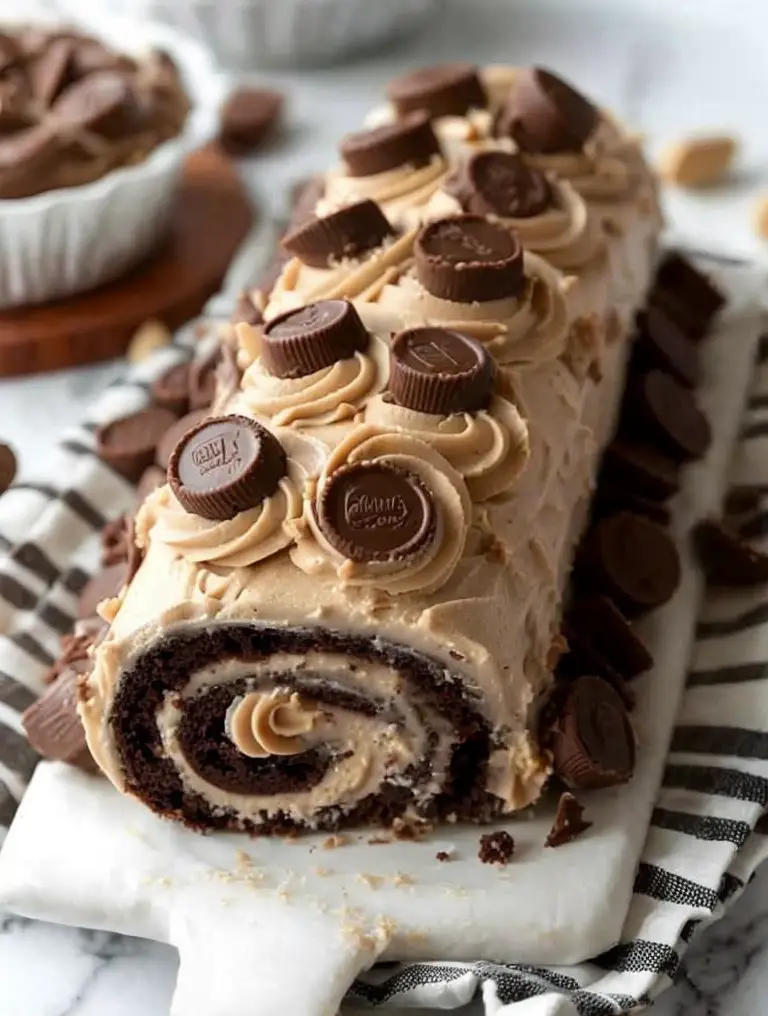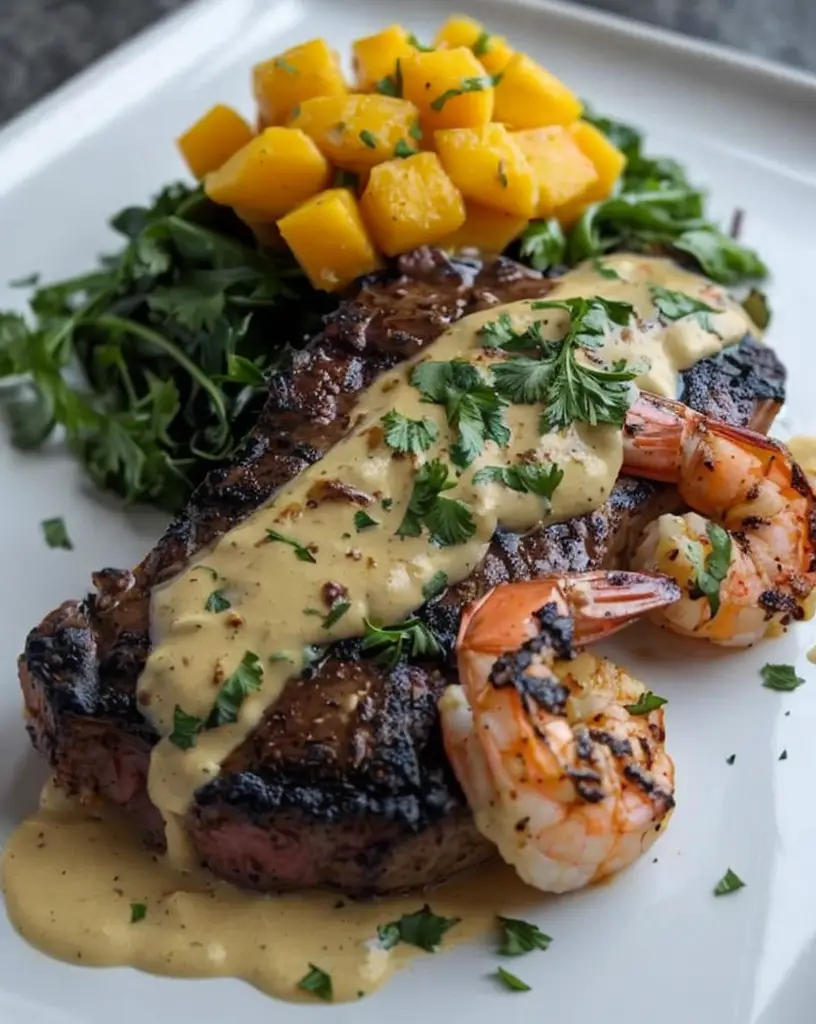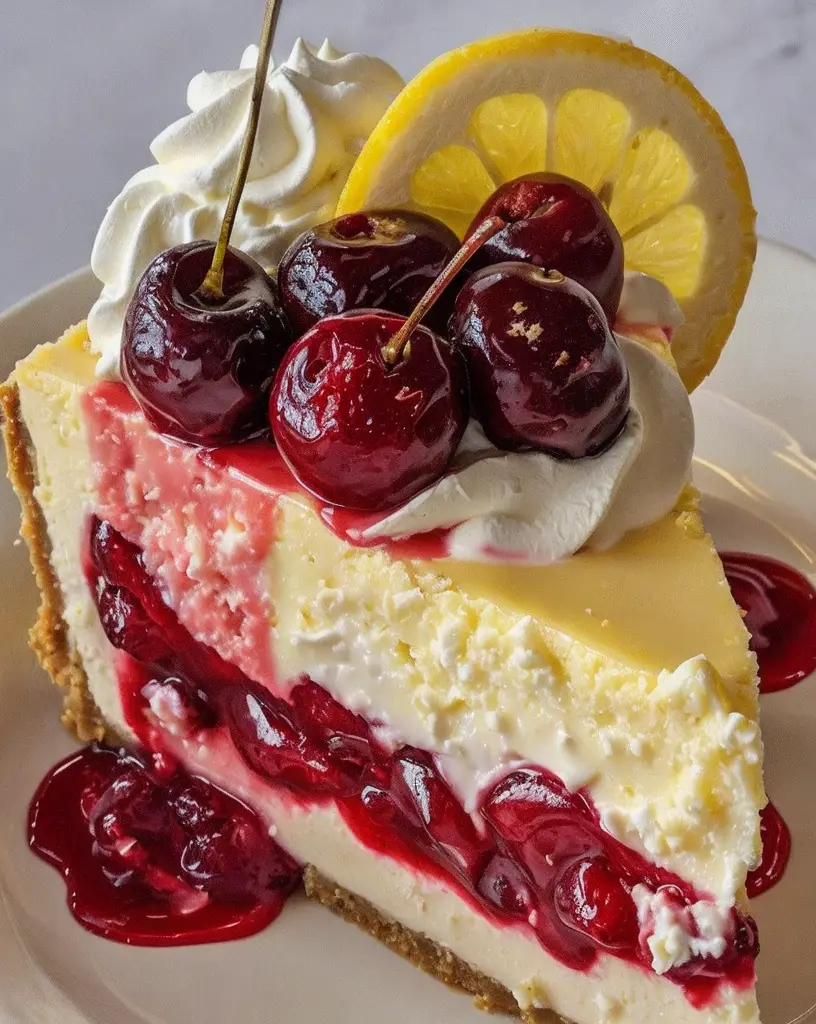Mini Pineapple Upside-Down Cheesecakes: A Bite-Sized Delight
Satisfy your sweet tooth with these delectable Mini Pineapple Upside-Down Cheesecakes. Combining the rich creaminess of cheesecake with the tropical allure of pineapple, this dessert will transport your taste buds to a sunny paradise. Whether you’re a dessert aficionado or just starting to explore baking, this recipe guarantees success with its charming presentation and delightful flavors.
In every bite, you’ll experience a marvelous fusion of caramelized pineapples on a buttery graham cracker base, topped with a velvety cheesecake layer. The juiciness of the pineapple enhances the richness of the cheesecake, offering an irresistible treat perfect for any occasion.
Quick Recipe Highlights
- Flavor Profile: The sweet pineapple mingles with the creamy cheesecake for a perfect balance of tart and sweet.
- Texture: A delightful mix of juicy, creamy, and crumbly textures creates a harmonious mouthfeel.
- Aroma: The alluring scent of freshly baked cheesecake and caramelized sugar will fill your kitchen.
- Visual Appeal: These mini delights feature a beautiful golden hue with a glossy, upside-down topping.
- Skill Level Needed: Simple techniques suitable for beginners with stunning results.
- Special Equipment: A standard muffin tin for perfect portion sizes.
Recipe Overview
- Difficulty Level: With straightforward steps and basic ingredients, this easy recipe is beginner-friendly.
- Category: Perfect as a dessert or a sweet treat for parties and gatherings.
- Cuisine: While rooted in American dessert traditions, it carries influences from the classic pineapple upside-down cake.
- Cost: An affordable dessert, using common pantry staples and fresh pineapple.
- Season: Best enjoyed in the summer when pineapples are at their peak sweet-tart balance.
- Occasion: Ideal for casual get-togethers or as a stunning end to a dinner party.
Why You’ll Love This Recipe
Indulging in Mini Pineapple Upside-Down Cheesecakes brings a perfect blend of taste and texture to your palate. The contrasting elements — smooth cheesecake and juicy pineapple — create a sensory experience that’s both refreshing and decadent.
This recipe’s convenience shines through in its simplicity. The short preparation time and minimal kitchen equipment mean you can whip up these cheesecakes without fuss, making them ideal for unexpected guests or busy schedules.
Nutritionally, this dessert offers a balance of indulgence and natural sweetness. By utilizing fresh pineapple, you add a dose of vitamin C to your dessert enjoyment. Swapping heavier ingredients in traditional cheesecakes for lighter options can reduce caloric intake while maintaining flavor.
Socially, these mini cheesecakes are conversational pieces that add charm to social gatherings. Their individual servings make them perfect for sharing, and the elegant presentation will impress your guests.
Finally, this recipe’s cost-effectiveness means you can create an upscale dessert at a fraction of the cost of purchasing pre-made options. Ingredients are accessible from most grocery stores, ensuring easy procurement and preparation.
Historical Background and Cultural Significance
The origin of the pineapple upside-down cake dates back to the early 1900s when canned pineapple became widely available. This led to a variety of creative uses, including the now iconic dessert. Over time, as cheesecake rose in popularity, inventive bakers began combining these beloved desserts.
Culturally, the pineapple upside-down cake represented the height of home baking sophistication in America, often appearing at potlucks and community gatherings. Its vibrant presentation and lush flavors made it a perennial favorite.
This recipe has evolved significantly, with the cheesecake variation offering a refined take on the original concept. The fusion of creamy cheesecake with tropical pineapple enhances the traditional dessert, bringing it to a more modern audience.
Regional variations can be found globally, with each emphasizing local tastes. In tropical regions, fresh pineapple is a staple, while temperate areas might adapt using seasonal fruits or syrup-soaked canned versions.
Ingredient Deep Dive
Pineapple serves as the star, celebrated for its juicy, tart sweetness. Historically significant in tropical regions, pineapples symbolize hospitality and luxury. Rich in vitamin C and antioxidants, they enhance both the flavor and nutrition of this dessert. Select ripe, vibrant fruit, and store them at room temperature until they reach peak ripeness.
Cheese in cheesecakes owes its cultural origins to Ancient Greece, where it was a revered food for the Olympics participants. Modern adaptations use cream cheese for its rich texture and tang. When selecting, choose full-fat varieties for optimal texture, and store it in the refrigerator, maintaining a cold chain to prevent spoilage.
To substitute graham crackers, you can use digestive biscuits or Oreo crumbs. Store perishables like cheese in airtight containers, and substitute pineapples with apples or peaches for variations.
Common Mistakes to Avoid
- Overmixing the cheesecake batter can lead to a dense texture. Mix just until combined to maintain creaminess.
- Neglecting to preheat the oven can result in uneven baking. Ensure your oven reaches the correct temperature before starting.
- Using cold cream cheese will lead to a lumpy batter. Allow cheese to soften at room temperature.
- Failing to grease the tin adequately may cause sticking. Use non-stick spray or butter to ensure release.
- Skipping cooling time might cause the cheesecake to crumple. Let them cool gradually to set perfectly.
- Undercooking or overcooking can affect the taste. Use a toothpick to check doneness accurately.
- Overfilling baking cups can cause overflow. Fill each cup just to the rim for even portions.
- Improper ingredient measurements can disrupt texture balance. Accurately measure each item to ensure consistency.
Essential Techniques
Achieving the perfect cheesecake batter is crucial for a smooth texture. Mixing at a low speed prevents air bubbles that cause cracking. Mastering this technique involves gentle folding and watching for a homogenous mixture with no lumps.
Caramelizing pineapple right involves cooking it until golden brown without burning. The sugars in pineapple will gradually caramelize, creating a deeper flavor. Watch for deepening color and a fragrant aroma as cues for readiness.
Creating a perfect crust involves pressing the graham cracker mixture firmly. Use a flat-bottomed glass for even pressure to ensure a compact base that holds its shape. Avoid leaving the base too loose, which can crumble upon serving.
Pro Tips for Perfect Mini Pineapple Upside-Down Cheesecakes
Before beginning, make sure all ingredients are at room temperature for a seamless mixing process. This will result in a smoother batter and flawless consistency.
For a more vibrant flavor, consider adding a dash of vanilla extract to the cheesecake mixture. This complements the sweetness of the pineapple beautifully.
If fresh pineapple isn’t available, drained canned pineapples can be a handy substitute, maintaining flavor without compromising texture.
Enhance the visual appeal by finely chopping maraschino cherries and incorporating them into the top layer. This creates an attractive, colorful garnish.
Ensure your instant-read thermometer is nearby to check the internal temperature. Cheesecakes should read 150°F for ideal doneness.
To add a delightful acidic contrast, garnish with a dollop of whipped cream, offering a textural balance and visual contrast.
Variations and Adaptations
Regional variations can incorporate tropical fruit blends such as mango or papaya, offering a different aromatic complexity.
For a seasonal touch, exchange pineapple with fresh pears or apples during autumn festivity baking to align with available produce.
To cater to specific dietary needs, the recipe can be adapted by using gluten-free graham crackers without sacrificing texture.
Embrace unexpected flavor experiments like adding a pinch of cinnamon or nutmeg to introduce a warm, spicy note.
For a more substantive texture modification, mix in crushed nuts like pecans or walnuts into the crust for added crunch.
Presentation-wise, these desserts shine individually plated, atop doilies or dessert plates, drizzled with extra caramel sauce for an upscale appearance.
Serving and Presentation Guide
Master the art of effortless plating by using mini dessert stands to highlight each cheesecake. This elevates the presentation and adds a touch of sophistication to your table settings.
For garnishing, a few sprigs of mint will add a splash of color and fragrant aroma that complements the pineapple infusion.
Serve with traditional accompaniments such as tropical fruit salads or light sorbets between each cheesecake for a balanced taste palette.
Experiment with modern serving styles by featuring the mini cheesecakes alongside cacao nibs or edible flowers for contemporary appeal.
When serving, maintain them slightly chilled for optimal taste, as warmth might affect the structure.
Remember to account for portion control to avoid indulgence; one or two per person offer a satisfying and delightful dessert experience.
Wine and Beverage Pairing
Pair these mini pineapple delights with a chilled glass of Moscato, which will complement the sweetness without overpowering the dessert’s nuances.
Non-alcoholic alternatives include sparkling water with lemon slices for a crisp, refreshing contrast to the dessert’s richness.
Coffee aficionados can savor an espresso alongside, its intensity complementing the cheesecake’s luscious, smooth texture.
Ensure beverage temperatures are spot-on; chilled Moscato at around 45°F maintains its refreshing nature, pairing seamlessly with each bite.
Serve these cheesecakes with a hint of tropical flair by offering coconut milk iced coffee as an innovative beverage choice that mirrors the dessert’s flavors.
Storage and Shelf Life
Proper storage involves refrigerating the cheesecakes in an airtight container to maintain freshness and prevent moisture loss.
Keep them chilled between 35-40°F in the refrigerator; this keeps the cheesecake intact and flavors blended harmoniously.
Use glass or plastic containers with secure lids to maintain optimal conditions, avoiding unwanted flavors or odors from the fridge.
Signs of spoilage may include discoloration or off odors, indicating it’s time to discard the old batch.
Reheating is unnecessary for these miniature treats; serve them straight from the fridge to appreciate their silky texture.
Freeze any extras by wrapping individually in plastic and storing in a freezer-safe bag, extending their life up to two months.
Make Ahead Strategies
Strategize your prep timeline by layering components the day before serving, allowing the flavors to meld wonderfully.
Store the baked base separately, topping with fresh cheesecake mix before chilling, maintaining maximum freshness.
Assess and balance quality impacts, refining cooking times or temperature settings if making in advance.
Prioritize careful assembly by ensuring pineapple slices are symmetrically placed for consistent baking and visual uniformity.
Though reheating isn’t required, adding fresh whipped topping or fruit garnishes right before serving enhances presentation.
Infuse freshness by sprinkling fresh citrus zest or thinly sliced pineapples before guest arrivals, adding vibrancy to the cheesecakes.
Scaling Instructions
When halving the recipe, reduce ingredient quantities proportionally, mindful of the impact on flavor concentration and baking times.
To double, utilize larger muffin tins or multiple pans to accommodate increased batter volume, making scaling more effective.
Equipment adjustments, such as larger mixers or additional tins, enhance efficiency without physical strain from mishandling volume.
Monitor timing modifications carefully, as larger batches may require additional cook and cool periods to ensure consistent outcomes.
Scaling for storage necessitates containers that support bulk prep, focusing on air-tightness to uphold freshness and prevent moisture loss.
Nutritional Deep Dive
Dive into the macro breakdown to reveal a balanced ratio of fats, carbohydrates, and proteins in this delectable dessert.
Micronutrients, such as the vitamin C found in pineapples, contribute to immune support and antioxidant benefits.
Highlight the health benefits associated with cheesecake’s fundamental ingredient, cream cheese, including calcium and protein content.
For dietary considerations, focus on portion analysis to maintain a balance between enjoying sweet treats and nurturing well-being.
Weight management tips include savoring in moderation and choosing smaller quantities or substitute ingredients like low-fat cheese.
Promote conscious guidance around indulgence, focusing on smaller servings that deliver the same flavorful punch without excess calories.
Dietary Adaptations
For those seeking gluten-free options, utilize certified GF graham crackers or almond meal for a redefined crust element.
Dairy-free enthusiasts can select lactose-free cream cheese or coconut-based substitutes without losing the characteristic creamy quality.
Those following vegan diets will appreciate plant-based soft cheese options combined with egg replacements for binding.
For low-carb adaptations, swap traditional sweetened elements with sugar alternatives, reducing overall carbohydrate intake.
Keto adjustments involve embracing almond flour for crusts and unrefined sweetener blends to comply with diet restrictions.
Paleo followers can substitute dairy and sweetened components with coconut-based or cinnamon-dusted nut variations for compatibility.
Low-FODMAP dieters will find successes in ingredient adjustments, sparingly utilizing sweetener alternatives and compliant lactose-free dairy.
Troubleshooting Guide
Address texture issues by monitoring batter consistency, ensuring ingredients are well-integrated yet not over-mixed, which can alter density.
Balance flavors by adjusting sugar content relative to cheesecakes’ tang, experimenting with less sugar or natural alternatives.
Maintain temperature stability during baking to prevent over or under-browning, crucial for uniform results.
Overcome equipment challenges by improvising tools, like using green beans reload on constraint pans and resource limitations.
Experiment with ingredients like lactose-free or almond-based cheese should dairy shortages or substitutions arise.
Tackle timing concerns through strategic prep layouts, arranging ingredient organization ahead of the baking process.
Recipe Success Stories
Readers have shared incredible adaptations, showcasing variations incorporating delightful berry toppings for colorful enhancements.
Community feedback has consistently rated high, noting the efficiency and presentation appeal, even in professional catering settings.
Countless variation successes remind us of the versatility and adaptability of this dessert to suit personal preferences.
Photographic tips submitted by enthusiasts recommend various angles capturing the visual essence of pineapple-topped cheesecakes.
Reader suggestions highlight innovative approaches to garnishing, incorporating everything from herbs to chocolate shards.
Frequently Asked Questions
Can I use other fruits instead of pineapple?
Yes, you can experiment with fruits like peaches or mangoes, depending on the season and personal preference.
How long do these cheesecakes last in the fridge?
Properly stored in an airtight container, they will remain fresh for up to five days.
What is the best cheese for these cheesecakes?
Full-fat cream cheese is ideal for achieving the desired creamy consistency and flavor profile.
Can I freeze these mini cheesecakes?
Absolutely, they freeze well. Wrap each in plastic wrap and store in a freezer bag for up to two months.
What can I use for a dairy-free version?
Substitute cream cheese with a vegan or lactose-free alternative to cater to dairy-free diets.
Are these cheesecakes suitable for a keto diet?
With low-carb adaptations like almond flour for crusts, they can fit within a keto framework.
What adjustments are necessary for high altitude?
You may need to decrease the baking time slightly and monitor closely to avoid overcooking.
How do I prevent the cheesecake from cracking?
Mix ingredients gently and avoid overbaking to maintain a crack-free, smooth surface.
What is the best way to serve these cheesecakes?
Serve them chilled, garnished with fresh fruit or whipped cream for added flair.
Should I grease the muffin tin?
Yes, using a non-stick cooking spray ensures easy release and clean presentation.
Additional Resources
Explore related recipes that embrace tropical flavors, complementing the Mini Pineapple Upside-Down Cheesecakes.
Technique guides available on our site cover the nuances of cheesecake baking, aiding in mastering your own creations.
Ingredient information provides insights into alternative options for varying dietary needs and personal preferences.
Our curated recommendations highlight equipment innovations, enhancing efficiency and effectiveness in your kitchen endeavors.
Seasonal variations emphasize the versatility of this cheesecake, aligning flavor profiles with available produce year-round.
Join the Conversation
Engage with fellow bakers on social media by sharing your culinary achievements, capturing the essence of these mini delights.
Share photography tips by experimenting with lighting and backgrounds to bring out the vibrant colors and textures of your creation.
Submit recipe reviews to offer insight and inspire others, contributing your unique adaptations and success strategies.
Become part of our community, joining discussions about variations that reflect local flavors or uncover innovative dietary adaptations.
Explore limitless possibilities in recipe variations, each inspired by personal interpretations and welcoming our readers’ creativity.
The Recipe
Mini Pineapple Upside-Down Cheesecakes
Serves: 12
Prep Time: 15 mins
Cook Time: 25 mins
Total Time: 40 mins
Kitchen Equipment Needed
- Muffin tin
- Mixing bowls
- Spatula
- Hand mixer
- Baking sheet
Ingredients
- 1 1/2 cups graham cracker crumbs
- 1/4 cup melted butter
- 1/4 cup brown sugar
- 1 can (20 oz) pineapple slices, drained and patted dry
- 12 maraschino cherries
- 2 (8 oz) packages cream cheese, softened
- 1/2 cup sugar
- 1 tsp vanilla extract
- 2 large eggs
Directions
- Preheat the oven to 325°F (165°C) and grease a 12-cup muffin tin generously.
- In a bowl, combine the graham cracker crumbs and melted butter. Press evenly into the bottom of each muffin cup.
- Arrange a pineapple slice at the bottom of each cup, placing a cherry in the center of each slice.
- In another bowl, beat the cream cheese until smooth. Gradually add sugar and vanilla, mixing well.
- Add eggs one at a time, beating on low speed just until incorporated.
- Spoon the cheesecake mixture evenly over the pineapple layers in the muffin cups.
- Bake for 23-25 minutes or until the centers are set. Cool completely before removing from the tin.
- Refrigerate for at least two hours before serving for best results.
Recipe Notes
- Ensure cream cheese is at room temperature for a smooth batter.
- Chill before serving to help the flavors meld.
- Experiment with additional toppings like whipped cream or nuts.




